How to choose a grout for a tile: compare cement and epoxy options
Even perfect tile laying will not look perfect if at the final stage of finishing you do not pay enough attention to the tile seams. The voids between the joints should not remain in their original form, so they are filled with a special material - grout (fugue). This does not allow moisture, debris and dust to get under the tile, which means that the durability of the lined surface increases significantly. In addition, if you know how to choose the right grout for the tile and in practice use this knowledge, you can easily mask laying defects and, in general, enhance the aesthetic effect of the tiled surface. And in order to choose any product of the construction market, you need to learn more about it. This is where we start.
Depending on the composition, grouts can be cement and epoxy.

As a grout, silicone sealant is sometimes used, which is sold in special tubes or cartridges. However, the fugue cannot be replaced by them! This is a tool with a slightly different effect. It is used to isolate the cladding from other materials, for example, at the junction of the tile cladding and the bathroom (sink, toilet, etc.). It is not practical to completely fill the tile joints with silicone sealant.
Content
Cement grout - a classic of the genre
The simplest grouts, which, even without special experience with the tiler, practically guarantee an excellent result, are cement-based mixtures. They include: finely ground cement, plasticizers, various additives and pigments. When mixed with water or latex (water-based), these components turn into a plastic material similar to putty.
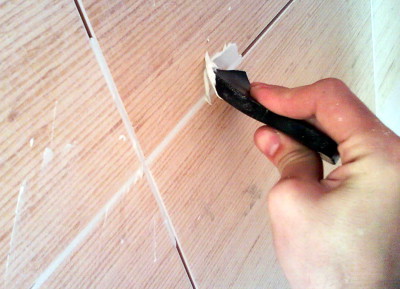
The composition and purpose of cement grouts are:
- for narrow seams (up to 5 mm);
- for wide seams (more than 5 mm).
Grouts designed for joints up to 5 mm have a standard composition (indicated above). For wider joints, cement grouts are used with a mandatory additional component - sand. The aggregate will prevent the cement composition from cracking and will “hold” it in the given form. Moreover, the wider the seam, the larger the grains of sand should be and vice versa.
Cement grouts can be purchased in the form of:
- finished composition (in plastic buckets);
- dry powder (in paper bags or bags).
Ready-made formulations can be used immediately after purchase, without any preparatory stage. On the one hand, it’s convenient, on the other hand, it’s not very practical: after opening the container, the elastic mass “lives” for a short time and dries soon, that is, it is advisable to use the entire volume at a time.
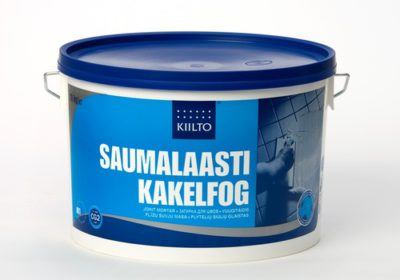
Choose a tile for the bathroom, but you can not decide? We will help you with tips and tell about design features in the article:https://floor.expertexpro.com/en/pol-pokritiya/plitka/kakuyu-plitku-luchshe-vybrat-dlya-vannoj.html.
Another, more popular type of cement grout is dry powder. Before starting work, the required amount should be shut with water or latex to the desired consistency.It is convenient to buy dry mixes with a small amount of work, as you can take from the bag the amount of powder that you need and remove the rest until better times. At least until next year, the main thing is to store in a dry place, since cement grout is afraid of moisture.
Advantages of cement grouts:
- convenience and ease of use;
- universality;
- wide selection of colors;
- good durability;
- low price.
Disadvantages:
- instability to pollution;
- destruction by household chemicals.
We want to offer you to watch a master class on grouting fugue from our German friends:
Epoxy grouts - for centuries
Cement grout can be selected for almost any occasion. However, some conditions can be a difficult test for cement compositions, significantly reducing their service life. Therefore, when laying tiles in pools, baths, laboratories, on kitchen aprons, countertops, that is, where the lining is constantly exposed to moisture, acids, household chemicals, it is best to use epoxy grout.
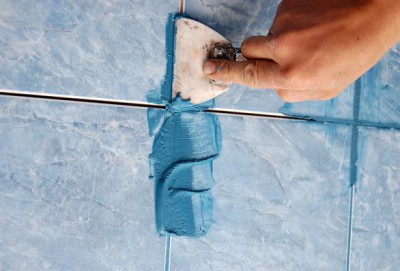
It will become easier to choose tiles for the kitchen by reading our practical tips in a special material:https://floor.expertexpro.com/en/pol-pokritiya/plitka/kakaya-plitka-luchshe-dlya-kuxni.html.
The composition of any epoxy grout includes two components:
- epoxy resin with modifying additives and filler (silica sand of various fractions);
- hardener.
In order to obtain a working mixture, it is necessary to mix these two components (they are contained separately in the purchased container). After thorough mixing, a rather dense but elastic mass is obtained. It is difficult to work with it because of the increased viscosity, therefore, even for professionals, filling the seams with epoxy is a long and tedious task. However, at the end of it you will receive a “bonus": the quality of the joints obtained (strength, bright color, frost resistance, etc.) will remain at the initial level of 40-50 years. That is why many tiler experts believe that the epoxy best grout for tiles.
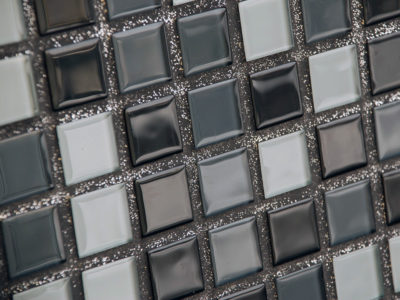
Advantages of epoxy grouts:
- high strength;
- durability;
- resistance to pollution, fungal infections, mold;
- resistance to chemicals and cleaning products;
- water tightness;
- high decorative properties.
Disadvantages:
- high price;
- difficulty in work.
We offer you to watch a video with an example of work with such a grout:
The tile is very durable, but if you do not care for it, then all its beauty will fade. On how to wash and clean the tiles in the bathroom, you will learn on our website:https://floor.expertexpro.com/en/pol-pokritiya/plitka/uxod-za-kafelem.html.
Choose by "clothes" - color solutions
The choice of a particular grout most often (especially if the buyer is not a specialist) is determined not by physical characteristics, but by appearance. And, first of all, in color. Therefore, at this stage of selection, we should dwell in more detail.
The composition of the cement grout initially provides for the presence of pigments that color the puffer in any color: from white to black. Although this does not always help to choose a shade that blends seamlessly with the tiles. In this case, it is advisable to use dyes. To create a unique color, it will be enough to add a little color (gouache) to the white trowel mixture.
The colors of the epoxy grout are set initially, thanks to the colored aggregate (quartz sand). "Epoxy" can even be transparent, which is especially appreciated when creating glass mosaic panels.A particularly interesting effect can be obtained when filling tile joints with grout with shiny components (gold, silver, bronze).
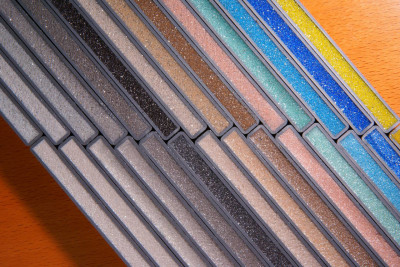
When thinking about how to choose a grout for a tile by color, you should be guided by your own taste. If you are unlucky with this, and you can’t decide at all, then choose a white puffer - this is the most win-win option. Unfortunately, it is suitable only for walls; on the floor, flawless white touches will get dirty after a couple of days. To design the floor cladding, it is recommended to use a fugue of gray (“cement”) or any dark color that is in harmony with the shade of the tile.

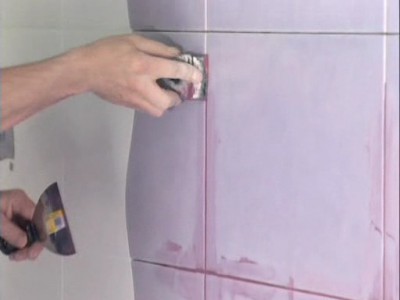


6 comments